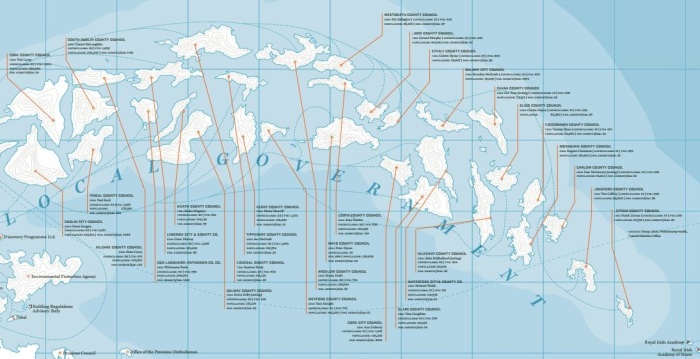
2.1.There are 31 City and County Councils with 949 members in them. Dublin City Council and Cork County Council are the largest.
2.2.Executive power is shared between the council and the Chief Executive. Representative powers are elected every 5 years. Members can nominate themselves or by local government elector in the area concerned, or by a person in a political party. Councillors are paid an average of 31,600 in salary, allowances, expenses, and fees.
Councillors have no individual power, but collective power over planning, sanitation, roads, and housing policies. The strengths of the local government include the influence they have to make changes, according to Paul McCauliffe, Councillor in Dublin City Council, Fianna Fail. Another Strength is that they are not under the party whip like the members of The Dáil. It is not rigid and there is no coalition.
A disadvantage would be the communication levels between the Local Government and The People.
2.3. Dublin City Council has a revenue budget of :
€ 803.56 million for 2016
This covers all expenditure for things such as ;
- Council services, e.g. housing, roads, water, litter, parks, fire brigade
- Procurement & supplies, e.g. IT equipment, transport, etc.
- Payroll
The budgets are managed by the councils department of Finance.
The Council receives their funds from things such as;
- Sale of goods & services, e.g. rent, parking fees: € 280.56 million
- Commercial Rates: € 320.30 million
- Government Grants: € 156.34 million
- Local Property Tax/GPG: € 6.8 million
- Net Credit Balance: € 27.16 million
- Pension Related Deduction €12.40 million